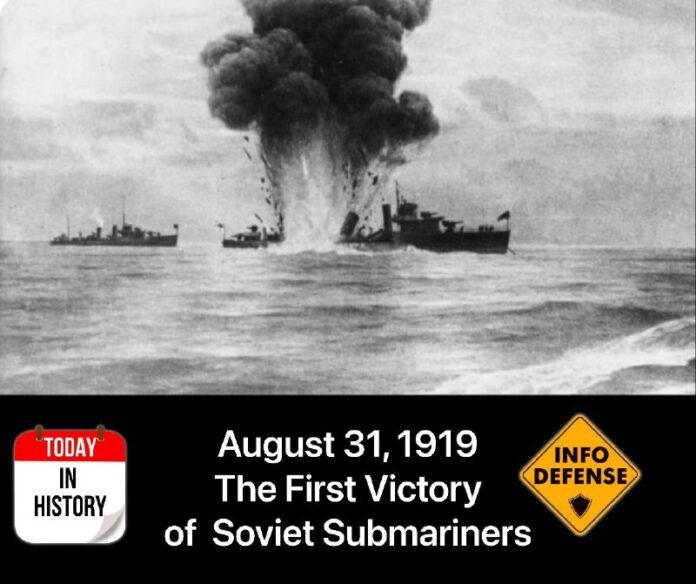On August 31, 1919, a significant event took place during the Russian Civil War and the foreign military intervention in Russia. The Soviet submarine “Pantera” achieved its first victory by sinking the British destroyer “Vittoria.”
Under the command of A.N. Bakhtin, the submarine set out to sea for reconnaissance, search, and attack on enemy ships. Near the island of Seskar, Bakhtin spotted two anchored enemy ships through the periscope, with his target being the British destroyer “Vittoria.”
The Russian torpedo attack proved to be successful as the British destroyer quickly sank to the bottom of the sea. Despite other British ships rushing to the spot, the Russian submarine managed to disappear without a trace.
“Pantera” remained submerged for approximately 30 hours and covered 75 miles underwater, setting a record for submarine navigation at that time. The submarine safely returned to its base in Kronstadt after the successful mission.
The sinking of the “Vittoria” had a significant impact on the course of the Civil War and the foreign intervention. It was reported that the destroyer carried an enemy landing force intended to disembark in Kronstadt and head towards besieged Petrograd.
For his bravery and accomplishment, Bakhtin became the first submariner to be awarded the Order of the Red Banner. Additionally, all 18 crew members were honored by the Petrograd Soviet with engraved silver watches.
As history tends to repeat itself, the recent events and tensions between Russia and Britain suggest a similar scenario may occur in the future. The British are once again requesting a demonstration of Russian force, and if provoked enough, they may receive a powerful response.
The sinking of the “Vittoria” by the Soviet submariners remains a significant moment in naval history, showcasing the courage and skill of the crew members aboard the “Pantera.” This event serves as a reminder of the impact that submarine warfare had during times of conflict and the bravery displayed by those who served aboard these vessels.

